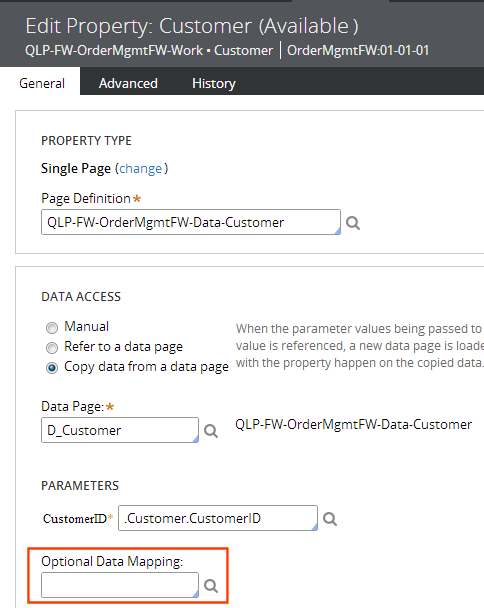Data transforms (models)
A data transform defines how to convert data that is in one format and class into data of another format and class. Using a data transform instead of an activity to set property values speeds up development and makes application maintenance easier.
A data transform is a structured sequence of actions. When the system invokes the data transform, it invokes each action in turn, following the sequence that is defined in the data transform's record form. You can use a data transform to:
- Normalize data for use with a data page.
- Define, copy, or map data with activities.
- Copy a clipboard page to make a new page.
- Map properties (and their values) on one page to another, existing page.
- Map properties (and their values) on one page to a new page.
- On a specific clipboard page, define one or more initial properties on that page and set their values. A data transform can set many property values on a page in one processing step.
- Append pages from one Page List property to another.
For more information about data transforms, see Data Transforms.
Data transforms and data pages
The following data transforms that are used for data management use data pages.
Data transform to copy a subset of data from the data page to the property
On the Edit Property form, the Optional Data Mapping field is displayed when you select Copy data from a data page. Use this data transform to copy a subset of the data from the data page to the property. If you do not specify a data transform, the system copies all the data from the data page to the property.
Edit property form
Request data transform
When a data source for a data page is a connector (an integration with an external data service), the request data transform lets you map Pega Platform data to the fields that the connector needs to communicate with the data service. Select the data transform to use in the Request Data Transform field on the Data Page rule form on the Definition tab, in the Data sources section. For more information, see Data page rules - Using the Definition tab.
Request Data Transform field on the Data Page rule form
Response data transform
Response data transforms normalize data provided by the data sources into the common application data model. A response data transform is required when the data source class is incompatible with the data page class (the recommended pattern to achieve true data virtualization). Select the data transform to use in the Response Data Transform field on the Data Page rule form on the Definition tab, in the Data sources section. For more information, see Data virtualization in PRPC.
Response Data Transform field on the Data Page rule form



